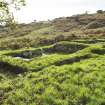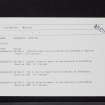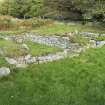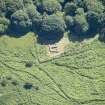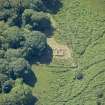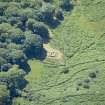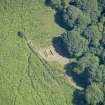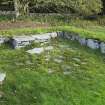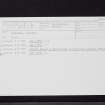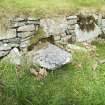Scheduled Maintenance
Please be advised that this website will undergo scheduled maintenance on the following dates: •
Tuesday 3rd December 11:00-15:00
During these times, some services may be temporarily unavailable. We apologise for any inconvenience this may cause.
Barhobble, Airylick
Burial(S) (Period Unassigned), Chapel (Period Unassigned), Church (Period Unassigned), Cist(S) (Period Unassigned), Cross(S) (Period Unassigned)
Site Name Barhobble, Airylick
Classification Burial(S) (Period Unassigned), Chapel (Period Unassigned), Church (Period Unassigned), Cist(S) (Period Unassigned), Cross(S) (Period Unassigned)
Alternative Name(s) Elrig House
Canmore ID 62744
Site Number NX34NW 48
NGR NX 3104 4941
Datum OSGB36 - NGR
Permalink http://canmore.org.uk/site/62744
- Council Dumfries And Galloway
- Parish Mochrum
- Former Region Dumfries And Galloway
- Former District Wigtown
- Former County Wigtownshire
Barhobble 9, cross slab fragment
Measurements: H 0.13m, W 0.10m, D 0.03m
Stone type: Silurian stone
Place of discovery: NX 3104 4941
Evidence for discovery: found during excavations of the site of an early medieval chapel and burial ground in the 1980s and 1990s.
Present location: Stranraer Museum.
Present condition: broken and weathered.
Description:
This fragment comes from the middle right-hand side of a cross-slab, carved on one side only. The carving shows the right-hand arm and part of the shaft, with part of a circle at the centre of the head and a small hollow in the space between the arm and the shaft.
Date range: early medieval.
Primary references: Cormack 1995, 62-3, no 18; Craig 1992, vol 3, 19-22.
Desk-based information compiled by A Ritchie 2019.
Barhobble 1, Airylick, Wigtownshire, carved stone
Measurements: L 0.25m, W 0.15m, D 0.08m
Stone type: Silurian stone
Place of discovery: NX 3104 4941
Evidence for discovery: found during excavations of the site of an early medieval chapel and burial ground in the 1980s and 1990s.
Present location: Stranraer Museum.
Present condition: broken and weathered.
Description:
This small fragment is carved on one broad face with part of a ring-knot formed of thick median-incised cords.
Date range: early medieval.
Primary references: Cormack 1995, 61, no 1; Craig 1992, vol 3, 19-22.
Desk-based information compiled by A Ritchie 2019
Barhobble 2, Airylick, Wigtownshire, cross slab fragment
Measurements: H 0.61m, W 0.28m
Stone type: Silurian stone
Place of discovery: NX 3104 4941
Evidence for discovery: found during excavations of the site of an early medieval chapel and burial ground in the 1980s and 1990s.
Present location: Stranraer Museum.
Present condition: broken and weathered.
Description:
This cross slab fragment is carved in low relief on one broad face with a cross with an inner incised line forming a roll moulding. The arms are expanded with oval hollows between them, and there is a ring and dot in the centre of the cross-head. At the top of the shaft is an incised swastika pattern, and the shaft appears to have been filled with interlace on the left and lightly pecked lattice-pattern on the right.
Date range: early medieval.
Primary references: Cormack 1995, 61-2, no 2; Craig 1992, vol 3, 19-22.
Barhobble 3, cross slab fragments
Measurements: L 0.23m, W 0.06m, D 0.06m
Stone type: Silurian stone
Place of discovery: NX 3104 4941
Evidence for discovery: found during excavations of the site of an early medieval chapel and burial ground in the 1980s and 1990s.
Present location: Stranraer Museum.
Present condition: broken and weathered.
Description:
Two conjoining fragments form part of the head of a hammer-headed cross-slab carved in false relief with a roll moulding down the surviving left-hand side of the slab. The hammer head appears to have had a convex upper surface, while the side-arms are slightly expanded. In the centre of the head is a double concentric ring. A narrow shaft has false-relief panels on either side and an incised pattern of diamonds within the shaft itself.
Date range: early medieval.
Primary references: Cormack 1995, 62-3, no 5; Craig 1992, vol 3, 19-22.
Desk-based information compiled by A Ritchie 2019
Barhobble 4, cross slab fragments
Measurements: A H 0.13m, W 0.13m; B H 0.15m, W 0.09m
Stone type: Silurian stone
Place of discovery: NX 3104 4941
Evidence for discovery: found during excavations of the site of an early medieval chapel and burial ground in the 1980s and 1990s.
Present location: Stranraer Museum.
Present condition: broken and weathered.
Description:
These two fragments are not conjoining but they represent parts of the shaft of a disc-head cross-slab. Within a plain flat-band border is a panel of four-cord plaitwork. At the top of the shaft is the lower part of the roll-moulded ring of the disc-head, which is likely to have enclosed a cross.
Date range: early medieval.
Primary references: Cormack 1995, 62-3, no 6; Craig 1992, vol 3, 19-22.
Desk-based information compiled by A Ritchie 2019
Barhobble 5, cross slab fragment
Measurements: H 0.23m, W 0.06m, D 0.06m
Stone type: Silurian stone
Place of discovery: NX 3104 4941
Evidence for discovery: found during excavations of the site of an early medieval chapel and burial ground in the 1980s and 1990s.
Present location: Stranraer Museum.
Present condition: broken and weathered.
Description:
This very worn fragment appears to be part of a cross carved in false relief, with expanded arms and rounded armpits. There may have been a wide flat-band moulding round the edge of the slab.
Date range: early medieval.
Primary references: Cormack 1995, 62-3, no 7; Craig 1992, vol 3, 19-22.
Desk-based information compiled by A Ritchie 2019
Barhobble 6, cross slab fragments
Measurements: A, H 0.13m, W 0.13m, D 0.02m; B, H 0.15m, W 0.09m
Stone type: Silurian stone
Place of discovery: NX 3104 4941
Evidence for discovery: found during excavations of the site of an early medieval chapel and burial ground in the 1980s and 1990s.
Present location: Stranraer Museum.
Present condition: broken and very weathered.
Description:
These two fragments form part of a disc-headed cross-slab: fragment A comes from the top of the shaft and fragment B from lower down the shaft on the left-hand side. There are traces of a plain moulding along the edge, enclosing a panel of four-cord interlace.
Date range: early medieval.
Primary references: Cormack 1995, 62-3, no 9; Craig 1992, vol 3, 19-22.
Desk-based information compiled by A Ritchie 2019
Barhobble 7, cross slab fragment
Measurements: H 0.23m, W 0.06m, D 0.06m
Stone type: Silurian stone
Place of discovery: NX 3104 4941
Evidence for discovery: found during excavations of the site of an early medieval chapel and burial ground in the 1980s and 1990s.
Present location: Stranraer Museum.
Present condition: broken and weathered.
Description:
This fragment comes from the upper part of a cross-slab, carved on one side only. There appears to have been a wide plain border to the stone, and a cross with slightly expanded arms and pecked areas between the arms.
Date range: early medieval.
Primary references: Cormack 1995, 62-3, no 18; Craig 1992, vol 3, 19-22.
Desk-based information compiled by A Ritchie 2019.
NX34NW 48 3104 4941
Further excavations in the SE quadrant of the church/chapel show that there are deposits extending some 0.7m below the floor level. Evidence was obtained from the upper levels that the chapel remained in use, or at least open, until the end of the 13th century; below this was a deposit of sandy clay containing two fragments of a disc headed cross with plain plait on the shaft. This level overlay a thin layer of burning. At the base of the deposits were several seemingly coffined burials oriented 70 degrees M and earlier than the stone built church which is oriented 90 degrees. At the head of a child's burial was a fragment of porfido verde antico. To the E of the church, inserted in the wall foundations of a recent building was a fragment of a hammer-headed cross originaly c20m across and of fine workmanship.
W F Cormack 1989
Further work on this site revealed that it had four phases, the first being 8th century and possibly monastic.
Phase II, by which time it may have fallen into lay hands, contains cross fragments (3 more recovered) of 10th to 11th century, probably associated with graves which underlie the church but on a different alignment. Several of these burials seem to have been in charcoal, two of which have yielded 2 sigma C-14 dates as follows: GU-2728 cal AD 1022-1213 and GU-2729 cal AD 1018-1221.
Phase III covers the life of a clay-bonded church, built in the 12th century over the Phase II burials, three of the bays separated probably by two timber crucks. The two western bays formed a nave with clay floor, the eastern bay a chancel with slightly raised stone-paved floor. At the NE corner between the altar and the N wall was a rectangular sunken area filled with rubble from which was recovered the leg of a pewter ewer or other vessel. this sunken area may have originally contained a sacristy chest. After a brief life, during which several burials, of which 3 were in partly stone-lined graves, were inserted in the church floor, this phase ended in burning.
Phase IV began with the insertion of a cross wall in lieu of the W cruck, a new S doorway, stone paving throughout and refurbishment of the two easternmost bays as a chapel. This phase may have terminated about 1300.
Recent reassessment of meagre documentary evidence indicates that Phase III may have been initiated by Fergus, Lord of Galloway (died 1161), or his son Uchtred (died 1174). Interim report available.
W F Cormack 1990
Further work outside S side of church revealed over 20 graves, some in cists, and on different alignments. It is hoped to complete investigation of graves around the church in 1992. A paved floor has been reinstated in the Phase IV chapel.
W F Cormack 1991.
About 90 graves have now been investigated under or outside the S side of the church - in all cases the skeletal remains have dissolved away. The great majority are simply earth dug, but several have stone 'head boxes' and others are wholly or partly stone lined. A NW/SE oriented grave was covered with stone slabs arranged tentwise ie with a ridge paralle to the body and yielded a C-14 date GU 3176 1000bp+/-50. Among interesting grave goods was a portion of iron heckle in a child's grave, and a fragment of Romano-British glass bangle (Kilbride Jones Type I) in another.
W F Cormack 1992.
Investigation of further graves, total now over 120, under and around the church has delayed completion of this dig. One grave had two stone side slabs, possibly reused, with 3 and 8 compass-inscribed circles respectively, measuring about 13cm in diameter. Below the end of the church and oriented parallel with and over the underlying charcoal burials is evidence of a lightly-built timber or wattle oratory or chapel destroyed by burning, width about 3m, length unknown. A further cross-slab of general 'celto-norse' period was found in demolition rubble from the church.
W F Cormack 1993.
Church added to 1:50000 scale Landranger map by Ordnance Survey in 2001 as Church (NR), (Rems of) [Nat].
Information from Ordnance Survey, January 2001.





















